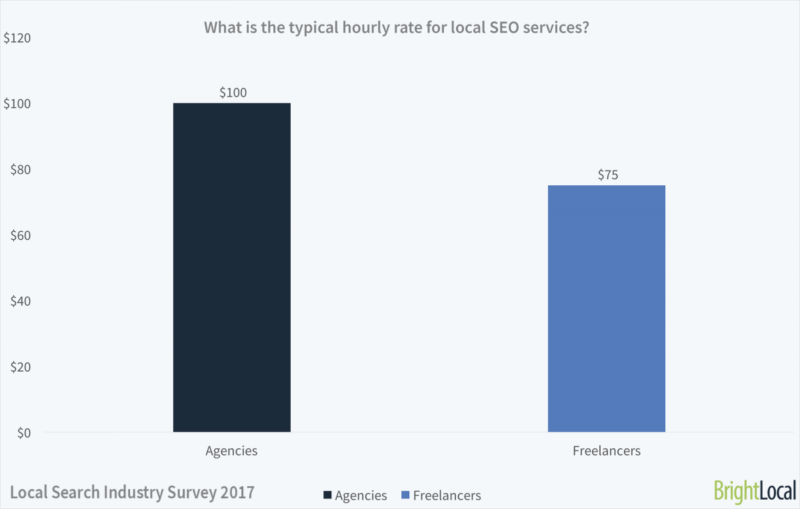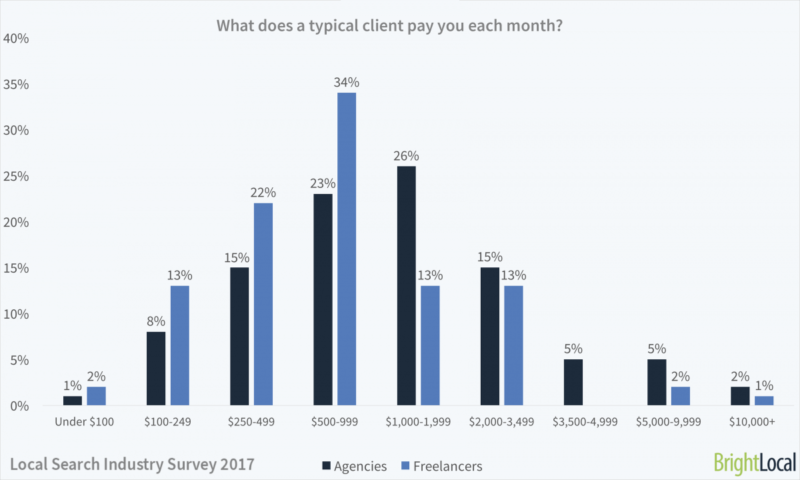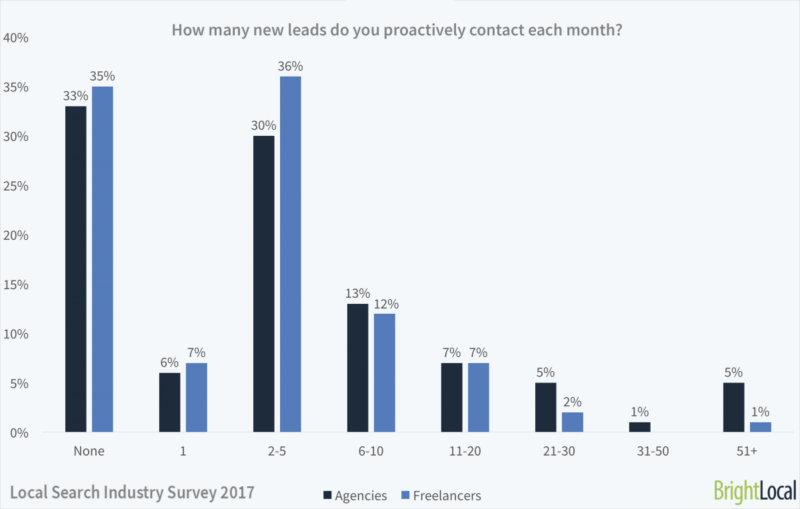Local search industry optimistic about 2018 — but less likely to hire
Columnist Jamie Pitman shares insights about the state of the local search industry from BrightLocal’s Local Search Industry Survey.
The local search landscape is a constantly evolving beast, regularly changing at the whim of Google My Business and, more and more these days, reliant on consumer reviews. As such, the folks working in this niche of the wider SEO industry have had to be quick on their feet to adapt to changes.
It’s no surprise, then, that the recent Local Search Industry Survey performed by my employer, BrightLocal, saw some significant changes occurring. The results of the survey, in which we polled 1,121 US-based local SEO professionals on everything from personal earnings and annual revenue to client pay and in-demand services, will be interesting reading for anyone looking to benchmark their services against competitors, and even those selling products and services to SEOs.
In this column, I’ll be picking out some of the most revealing results from the survey (some of which are actually more in-depth than those found in the original study) and explaining what these could potentially mean for the local SEO industry.
Local agency SEOs earn $17,000 more per year than local SEO freelancers
I think it’s fair to say we’d be surprised if agency SEOs didn’t earn more than freelancers per year, but what does come as a surprise is how much more they earn.
Obviously, the agency model can work better at scale, and larger clients bring in larger payments, but it would be interesting to see whether clients of agencies feel they’re necessarily seeing more value than clients of freelancers.
The higher salary could also be due to how much agencies bill per hour (this is covered below) compared to freelancer rates.
Local SEO agencies bill $25 more per hour than local SEO freelancers
To calculate these figures, we looked at the medians of typical hourly rates for agencies and freelancers. From this, we can see that agencies certainly consider their time worth a significant amount more than freelancers’.
The amount charged can obviously be somewhat dependent on the size of the client (and as mentioned previously, the agency model tends to suit larger businesses with multiple locations), but if freelancers are confident they can deliver the same results as agencies, they might consider upping their rates to increase perceived value and earn more along the way.
Local SEO freelancers are paid $815 less per client per month than local SEO agencies
Sticking with the ever-popular topic of payments, we learned that local SEO agencies are paid far, far more than freelancers per client per month. This is admittedly expected, considering the results reported above, but there are some other interesting nuggets here worth exploring further.
A massive 71 percent of local SEO freelancers get less than $1,000 per month from each client. This is especially notable as, elsewhere in our results analysis, we found that the average local SEO freelancer personally manages nine clients. That’s a significant proportion of freelancers bringing in $9,000 or more per month (not including overheads).
On-site SEO is still the most requested local SEO service
Moving away from the comparison of local SEO agencies and freelancers, we wanted to know what some of the most requested local SEO services were in 2017.
Even with the growth in importance of Google My Business and reputation management, local businesses still see traditional on-site SEO as their number one priority. This has been the case for the last three years we’ve run this survey, and this certainly dovetails with the fact that standard organic rankings have been found to be the most important factor in the local pack rankings.
Interestingly, demand for video marketing saw a slump in 2017, despite there being a lot of positive noise out there about it becoming more important to online marketing. I would certainly expect this to change massively in 2018’s survey, especially with the introduction of videos to Google My Business.
It also seems that businesses are getting the message that in order to truly compete online, you’ve got to open your wallet, as 2017 saw a continued increase in the percentage of clients requiring PPC.
This is the first time in the survey’s history that we’ve split paid social from organic social, and the resulting data shows that paid social isn’t too far behind organic social in terms of requested service (a 7 percent difference).
Only 25% of local SEO agencies say they will ‘definitely’ be hiring SEO staff in 2018
It seems to be an uncertain time for local SEO, with a clear three-year trend seen in the reduction of agencies and freelancers saying they’ll definitely hire SEO staff. Coupled with an increase in those saying it’s “unlikely” they’ll hire new SEO staff, it paints a picture of a shrinking industry.
However, this doesn’t mean that there isn’t optimism in the industry. In fact, quite the reverse is true. Our survey found that 92 percent of agencies and freelancers are “very optimistic” or “fairly optimistic” about the SEO industry in 2018.
It could well be that the growth in automation or outsourcing of SEO tasks such as citation building or link outreach has led us to a point where there’s no longer as much of a need to hire.
35% of local SEO freelancers didn’t proactively contact any new leads in 2017
These shocking figures either show a stagnation in local search or, much like the above data on hiring, it could simply mean that for a lot of local SEO professionals, everything’s “ticking along nicely.”
Local SEO isn’t a quick-fix solution, as we know, and requires continual effort in order to achieve and maintain great results, so there’s a potential here for local SEOs just being good at their jobs and not really requiring any new business.
Another factor to bear in mind is that many local SEO freelancers specialize in a specific niche industry, such as medical or law, and therefore, there’s just not the business out there in the local area to enable significant growth.
In speaking to our customers, I’ve also heard a lot say that they try to keep their client numbers reasonably low in order to be able to continue to deliver a more personalized service, which is more suited to local business clients.
Conclusion
The data above is pulled from just over 1,000 responses, so it obviously doesn’t cover every local SEO in the country. What it does, however, is paint a picture of an industry with a very interesting year ahead of it.
With the emergence of Facebook Local, the ever-growing stable of elements in Google My Business and the expansion of Google’s Local Services Ads, 2017 ended with a lot of pieces waiting to fall in place. The question is whether the local SEO industry sees these as challenges or opportunities.
Contributing authors are invited to create content for Search Engine Land and are chosen for their expertise and contribution to the search community. Our contributors work under the oversight of the editorial staff and contributions are checked for quality and relevance to our readers. The opinions they express are their own.
Related stories






